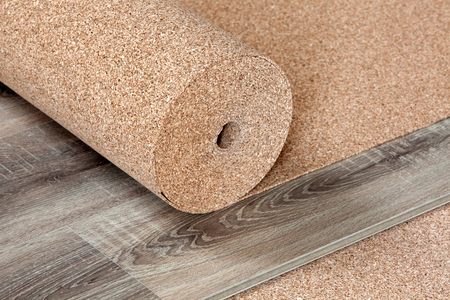Different Types of Underlayment for Your Floors

Some floors can require installing an underlayment. Your underlayment is a layer between the subfloor and the flooring you install on top of it. Different underlayments come with a list of different pros and cons. Knowing a few different types of underlayment options can help you choose the one the best suits your needs. Most underlayment comes down to personal preferences, but keep in mind that some manufacturers will not warranty floors if you use a competitor’s underlayment.
Felt
The most traditional underlayment is felt. It is one of the easiest underlayments to install and has a little bit more weight to it. Thick felt is the best sound dampener underlayment. It serves as an excellent insulator to help regulate your home’s temperature. Plus, thicker felt can even give your floor a soft feel when you walk on it. However, that being said felt is one of the more expensive options.
Foam
Foam is a common underlayment option and will come in different varieties of thicknesses. Foam underlayments are typically manufactured with a moisture barrier to protect your floor from water damage. They also serve as a sound dampener which is excellent for two story homes. This can prevent noises from traveling through the home when people are walking upstairs. Though foam absorbs some noise, it is not as good as cork underlayments, but you will find that foam is usually the most cost-effective underlayment and easy to install.
Cork
Another standard underlayment option is cork. Cork is a natural option that does not hurt trees when extracted. It serves as a moisture barrier as well as a high-quality sound dampener. Some people prefer cork because it is an excellent insulator to homes as well as fire resistant. If water does happen to get on your cork, unlike felt and foam, the cork will not mold. That being said, cork can be a little problematic to install when it comes in rolls.
Even if your floor does not require an underlayment, some homeowners and business will still add one for their many additional benefits. If you are looking for the most inexpensive option, go with foam, but the best quality would be felt. Some homeowners will still go with cork because it is a more natural approach and offers slightly fewer benefits than felt at a lower cost.